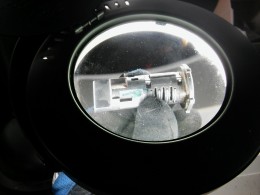519-722-7776 Near You!
519-722-7776 Near You!
Chrysler Ignition
Chrysler Ignition
Chrysler Ignition 🔧 Repair Video by EA Locksmith Inc.
Chrysler Ignition 🔧 Repair Video by EA Locksmith Inc.
EA Locksmith Inc. - All in One Locksmith Service In Kitchener, Waterloo, Cambridge and Guelph areas!
Typical Chrysler ignitions up until 2008 are mechanical ignitions, containing small springs and pins. These components weaken over time because they get pressed and depressed in and out with the key. Many times under different temperatures and humidity conditions.
These parts were meant to break simply because every type of material weakens over time. Some last over a period of 10 years and some fail to operate after about 4–5 years due to poor maintenance. It does depend on how you operate your ignition, some drivers are aggressive with their cars. Some drivers have a “romance” with their vehicle. So they are simply gentle.
Chrysler motors are pretty awesome with their inventions and innovations, for example they were one of the first to use electronic fuel injection in their cars back in 1957 called "ElectroJector" for their Chrysler 300D, Dodge D-500 and more which was later replaced with a catalytic converter.
Then in 2008 Chrysler replaced it's mechanical ignition to an electronic ignition key system mounted into the dash. Instead of the typical steering column systems. The new ignition got plenty of attention in 2014 when more complaints started to arrive about faulty ignitions Chrysler decided to replace the ignitions rather than repairing them.
The 2017 Chrysler ignitions are still the same and they are pretty good except the fact that the remotes tend to wear off super quick.
Old Chrysler ignitions operate like a lock mechanism, by sliding the key into the ignition you are compressing the pins to line up on the sheer line according to the key pattern. Then as you wish to turn the ignition, the "side bar" needs to be pressed as well.
Ignition Side Push Bar. I call it “bridge pin” simply because it looks like a bridge.
This tiny piece prevents your ignition from switching on to “ON” position.

Many GM ignitions and Chrysler ignitions as well have this sidebar in the ignition cylinder.
It acts like a barrier, by sliding your key into the ignition cylinder you align the bar under the sheer line inside the cylinder itself and the cylinder can freely turn to “ON” position. This sidebar in many cases contains springs as well which keep pushing the bar outwards. This constant pressure also causes same wear and tear which leads to an ignition lockout.
I suggest having tweezers, thin drill bits or similar to help you operate on the ignition. In most cases the ignition requires good clean up but in some cases the problem is more severe and many pins need replacement. I suggest turning to your local locksmith.
Feel free to enjoy our ignition repair video, we are always working on new projects and open for new Media ideas! Share your thoughts!
EA Locksmith Inc.
31 Machado st Kitchener ON n2r0c1 CA
Phone: +1.5197227776
E-mail:
Info@ealocksmith.ca
EA Locksmith Inc. ©
